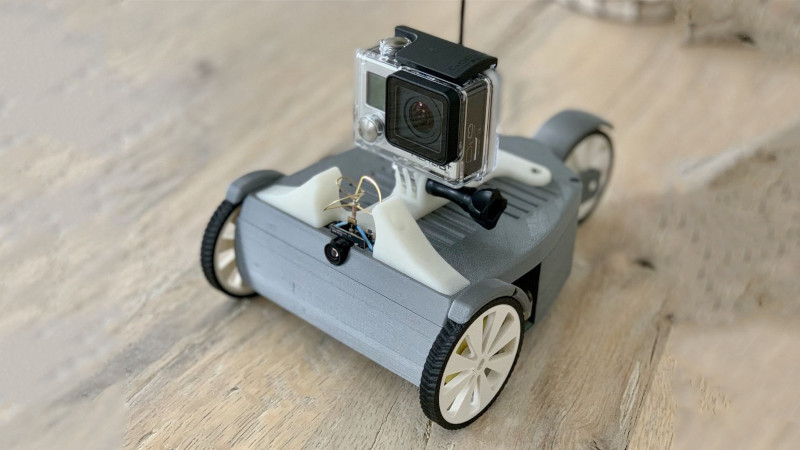Small robotics builds with three wheels are plentiful. The most typical configuration is to have the two front wheels drive and turn the vehicle in a skid-steer configuration. The third wheel is often a simple caster. However, this isn’t the only way to go, and [markus.purtz] has put together a build that does things differently.
The build is a small, radio-controlled FPV trike. Instead of the usual skid-steer setup, the rear wheel is mounted on a pair of horizontal bearings which allows it to pivot left and right. A servo is used to control the rear wheel position, with a pair of tie rod ends used to connect the horn to the rear steering assembly. It’s not the only unconventional design choice, either – magnets are used to affix the top plate to the vehicle chassis, rather than screws or clips. For video, the user can mount either a small dedicated FPV camera, or a GoPro with the included mount.
Without any code or control details posted, we can’t be 100% sure how it all works. However, from the video, it appears that both front wheels are being driven at the same speed, with steering handled solely by the rear wheel. This is apparent when driving on a smooth surface, where the vehicle can be seen to slide when turning. While it’s unlikely this setup has many advantages over a simpler differential steering build with a caster, it does show that rear steering can be effective on its own.
It’s a build that shows off the benefits of using proper bearings and mechanical parts in a design. With today’s online marketplaces, it’s never been easier to find what you need. Parts are on Thingiverse for those interested in replicating the design. Meanwhile little FPV bots remain popular, and we’re sure we’ll continue to see them coming in. Video after the break.















Most recumbent trikes for people use a fixed, driven rear wheel, and Ackermann steering for the front, un-driven wheels. This seems to me to have some advantages over either skid-steer (only needs one motor/controller) or a rear-steer (handles turns better.) Are there reasons robotics people don’t use this? Is it the convenience of wheel-right-on-motor and no need for pivots and designing steering geometry?
Trouble with it is the speed relationship between the front wheels is fixed causing one to drag when turning. Needs some form of differential drive for the front wheels. Maybe a single motor with a dif or proportionaly adjust the drive based on the angle of the steering wheel. If the drive wheels are actively controlled with the steering That would effectively create 3 wheel steering. Could have some potential for use on surfaces with poor/irregular traction properties
You can start with the differential drive on the front wheels and just have the tail wheel swivel to follow.
That’s what I expected from the picture. Seems easier at least
One of my favorite designs is just that: differential with a tail swivel. I even saw this done on a semi-trailer-like model, with a spring in the joint to kinda auto-center it.
Now that I think hard about it, I’m not sure why the spring, but it sure looked good in motion.
When I saw this one, I thought the rear wheel was driven and steered, and that the two front wheels were passive.